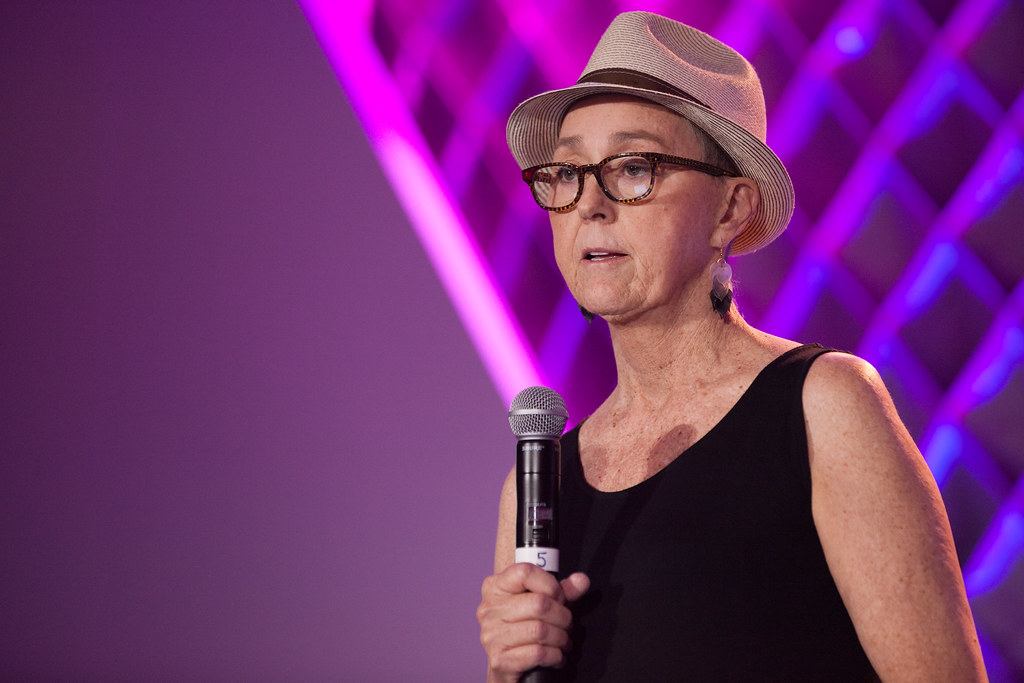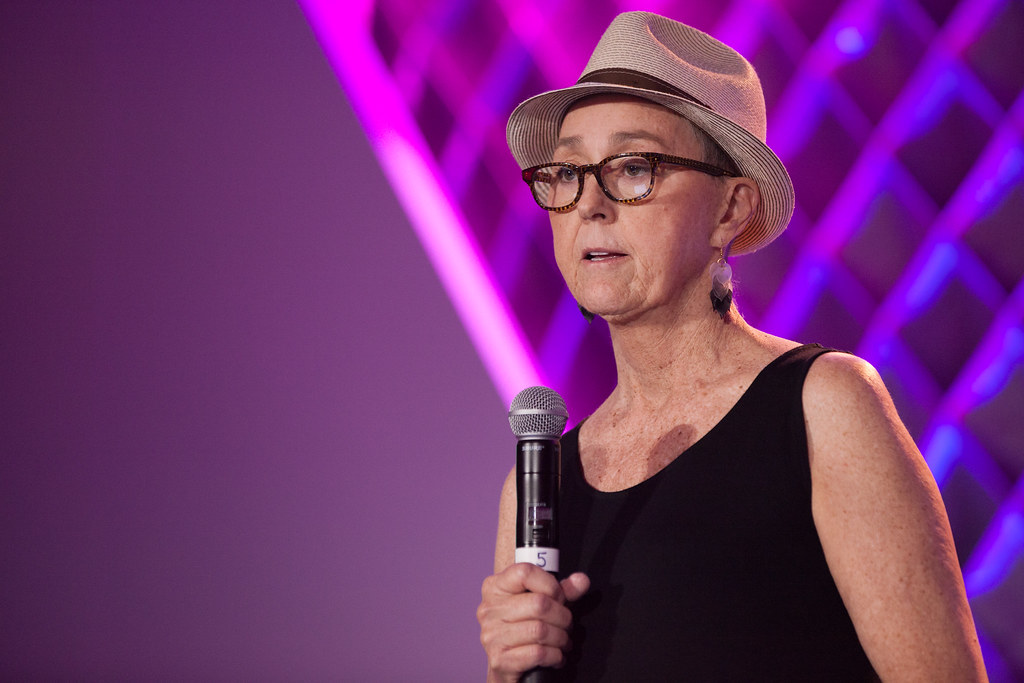
By Laurie Becklund – A Former Staff Writer For the L.A. Times Who Died of Cancer on February 8, 2015
I am dying, literally, at my home in Hollywood, of metastatic breast cancer, the only kind of breast cancer that kills. For six years I’ve known I was going to die. I just didn’t know when.
Then, a couple of weeks before Christmas, a new, deadly diagnosis gave me a deadline. No doctor would promise me I’d make it to 2015.
Promise me, I told my friends and family, that you’ll never say that I died after “fighting a courageous battle with breast cancer.” This tired, trite line dishonors the dead and the dying by suggesting that we, the victims, are responsible for our deaths or that the fight we were in was ever fair.
Promise me you’ll never wear a pink ribbon in my name or drop a dollar into a bucket that goes to breast cancer “awareness” for “early detection for a cure,” the mantra of fund-raising juggernaut Susan G. Komen, which has propagated a distorted message about breast cancer and how to “cure” it.
I’m proof that early detection doesn’t cure cancer. I had more than 20 mammograms, and none of them caught my disease. In fact, we now have significant studies showing that routine mammogram screening, which may result in misdiagnoses, unnecessary treatment and radiation overexposure, can harm more people than it helps.
In 1996, during a self-exam, I found a peanut-sized lump in one breast that turned out to be stage one breast cancer. I had the “best,” most common, kind of breast cancer, found it early, got a lumpectomy and short dose of radiation. Five years out, my doctor told me there was little chance of recurrence and said, “Have a great life!”
You can imagine my shock when, 13 years after my initial diagnosis, I was in gridlock on the Harbor Freeway and got a call from my doctor with the results of a PET scan ordered after routine blood labs. “Maybe you should pull over,” he said.
Half an hour later, in an elementary school parking lot, I learned the scans revealed stage four breast cancer in my bones, liver, lungs and brain: a death sentence with an average life expectancy of three years.
I demanded the truth, always, from my doctors. I was a reporter who needed facts to plan whatever life I had left. I would not live in denial. But I was too scared, too private to tell anyone except my husband, my daughter and three friends. My very cells suddenly became my most intimate secrets.
Who would ever sign another book contract with a dying woman? Or remember Laurie Becklund, valedictorian, Fulbright scholar, former Times staff writer who exposed the Salvadoran death squads and helped The Times win a Pulitzer Prize for coverage of the 1992 L.A. riots? More important, and more honest, who would ever again look at me just as Laurie?
It took me more than two years to summon the courage to meet others like me, at a Metastatic Breast Cancer Network conference. When I arrived there were no pink ribbons in sight, except for a single lapel pin that had been turned upside down like a noose.
I introduced myself to the group’s president and vice president, who were comparing their hands, red and shiny from the side effects of various chemo treatments. Metaphorically, I had been both hiding my identity and fearing I’d lose it. It wasn’t until that day that I learned some people literally lose theirs, via their fingerprints.
The women at the conference greeted me with questions. They were shocked to meet someone whose cancer had metastasized to all four possible sites breast cancer can go. How was I even alive? They had set up lunch tables labeled “Brain,” “Bones,” “Lungs” and “Liver.” I told myself, at least I could table-hop.
Later that day, in one of the most powerful rituals I have ever seen, the group’s president asked all of us to stand, then sit back down when she reached the number of years since our diagnosis. At two years, most had to sit down. When she reached seven, no one I could see was still standing.
Looking back, I realize that I’ve been trying to report my way out of this disease. I’ve read so many books; researched hundreds of clinical trials; done my best to learn the complicated language of cancer and microbiology; attended conferences in Indiana, Florida, Mexico and Portugal. I joined online forums. I signed on with the user name “WontDieofIgnorance.” Despite it all, I fear that is exactly what is going to happen. I might as well have been playing Chutes and Ladders, a childhood board game whose outcome is based on rolls of the dice.
The medical establishment tells me I have “failed” a number of therapies. That’s not right: The establishment and its therapies have failed me. The system we live in as metastatic breast cancer patients is simply not designed to deal with the cycle we are living and dying in. The estimated 40,000 women (and a few men) who die annually can’t wait years for FDA-approved, “gold standard” clinical trials. We’re dying now.
Another quarter-million Americans are estimated to be waiting in the wings. I say “estimated” because no one is required to report a metastatic diagnosis. Death certificates normally report symptoms such as “respiratory failure,” not the actual disease. We are literally uncounted.
We now know that breast cancer is not one disease. What works for one person might not for another: There is no one “cure.” We are each, in effect, one-person clinical trials. Yet the knowledge generated from those trials will die with us because there is no comprehensive database of metastatic breast cancer patients, their characteristics and what treatments did and didn’t help them.
In the Big Data-era, this void is criminal. Consider what Wall Street does. Even the tiniest companies can see how much stock they sell, compare themselves to cohorts, review history, predict trends. Why can’t we create such a database for cancer patients, so we can all learn from patient experiences and make more educated decisions on what treatments will extend and improve lives?
The most powerful organization in the breast cancer universe, Susan G. Komen , has raised $2.5 billion over the last 20 years, much more than many corporations will ever earn. Yet Komen channels only a fraction of those funds into research or systems to help those who are already seriously sick. Most of that money continues to go to a breast cancer “awareness” campaign that is now painfully out of date.
We need people — patients, doctors, scientists, politicians, investors, families — to make a fresh start. We must create a new system of data collection and an open, online, broad-range database about patient histories that will provide information invaluable to those who’ve been given a death sentence. Patients as well as doctors must contribute.
It will come too late for me. But it is possible to end the game: Patients shouldn’t have to climb up ladders and fall down chutes.
Laurie Becklund, a former Times staff writer, died Feb. 8. She wrote this over the last few months.
Postscript
It is regrettable that Laurie Becklund did not attend the Cancer Control Society Convention where she could have interviewed hundreds of former cancer patients who rejected toxic therapies and were cured of cancer naturally. Instead, even toward the end of her life, Laurie continued to visualize help coming from politicians owned by pharma and the cancer industry she railed against. Susan G. Komen, The American Cancer Society and their business partners in the petro/chemical pharmaceutical industry have no interest in curing the diseases they cause. Their only interest in Laurie Becklund and cancer patients like her is figuring out how their friends and relatives can be manipulated into using the deaths of their loved ones as fund raising opportunities. And this they are doing brilliantly. The greed and cynicism of Komen, The American Cancer Society, Stand up to Cancer, and all the other cancer “charities” is only equaled by their indifference to people who continue to suffer and die from toxic therapies that garner the cancer industry billions of dollars a year.


